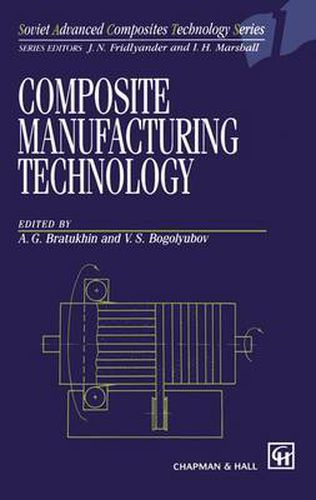Readings Newsletter
Become a Readings Member to make your shopping experience even easier.
Sign in or sign up for free!
You’re not far away from qualifying for FREE standard shipping within Australia
You’ve qualified for FREE standard shipping within Australia
The cart is loading…






This title is printed to order. This book may have been self-published. If so, we cannot guarantee the quality of the content. In the main most books will have gone through the editing process however some may not. We therefore suggest that you be aware of this before ordering this book. If in doubt check either the author or publisher’s details as we are unable to accept any returns unless they are faulty. Please contact us if you have any questions.
Some years ago in Paisley (Scotland) the International Conference on Composite Materials, headed by Professor I. Marshall, took place. During the conference, I presented a paper on the manufacturing and properties of the Soviet Union’s composite materials. Soviet industry had made great achievements in the manufacturing of composite materials for aerospace and rocket applications. For example, the fraction of composites (predominantly carbon fibre reinforced plastics) in the large passenger aircrafts Tu-204 and 11-86 is 12-15% of the structure weight. The percentage by weight share of composites in military aircraft is greater and the fraction of composites (organic fibre reinforced plastics) used in military helicopters exceeds a half of the total structure weight. The nose parts of most rockets are produced in carbon-carbon materials. In the Soviet spacecraft ‘Buran’ many fuselage tubes are made of boron-aluminium composites. Carbon-aluminium is used for space mirrors and gas turbine blades. These are just a few examples of applications. Many participants at the Paisley conference suggested that the substantial Soviet experience in the field of composite materials should be distilled and presented in the form of a comprehensive reference publication. So the idea of the preparation and publication of a six volume work Soviet Advanced Composites Technology, edited by Professor I. Marshall and me, was born.
$9.00 standard shipping within Australia
FREE standard shipping within Australia for orders over $100.00
Express & International shipping calculated at checkout
This title is printed to order. This book may have been self-published. If so, we cannot guarantee the quality of the content. In the main most books will have gone through the editing process however some may not. We therefore suggest that you be aware of this before ordering this book. If in doubt check either the author or publisher’s details as we are unable to accept any returns unless they are faulty. Please contact us if you have any questions.
Some years ago in Paisley (Scotland) the International Conference on Composite Materials, headed by Professor I. Marshall, took place. During the conference, I presented a paper on the manufacturing and properties of the Soviet Union’s composite materials. Soviet industry had made great achievements in the manufacturing of composite materials for aerospace and rocket applications. For example, the fraction of composites (predominantly carbon fibre reinforced plastics) in the large passenger aircrafts Tu-204 and 11-86 is 12-15% of the structure weight. The percentage by weight share of composites in military aircraft is greater and the fraction of composites (organic fibre reinforced plastics) used in military helicopters exceeds a half of the total structure weight. The nose parts of most rockets are produced in carbon-carbon materials. In the Soviet spacecraft ‘Buran’ many fuselage tubes are made of boron-aluminium composites. Carbon-aluminium is used for space mirrors and gas turbine blades. These are just a few examples of applications. Many participants at the Paisley conference suggested that the substantial Soviet experience in the field of composite materials should be distilled and presented in the form of a comprehensive reference publication. So the idea of the preparation and publication of a six volume work Soviet Advanced Composites Technology, edited by Professor I. Marshall and me, was born.